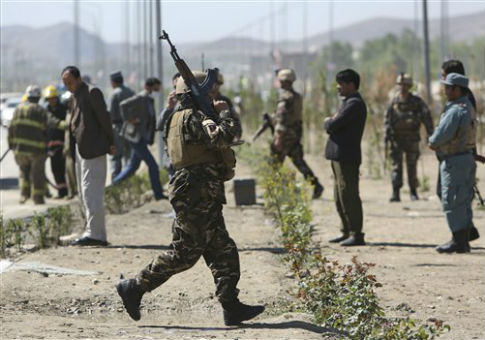Afghan security forces are currently unprepared to handle the country’s defenses and will continue to lack essential training by the time the United States scales back its military presence in the country at the end of 2016, according to a senior U.S. official.
Despite the billions spent on their training, the Afghan National Defense and Security Forces (ANDSF) remain unprepared for handling the country’s defenses and stopping insurgent groups from waging attacks, according to John Sopko, the Special Inspector General for Afghan Reconstruction (SIGAR).
Sopko outlined the massive challenges facing the ANDSF and expressed concern that the forces are not fit to defend the country during a speech Wednesday in Washington, D.C.
Sopko said his concerns are shared by senior military leaders, who have long struggled to prepare the ANDSF to perform key functions.
"I am also worried that the Afghan ministries aren’t, in any way, ready to stand on their own," he said. "Senior U.S. military leaders in Afghanistan told me that it will take years for the Afghans to master their essential functions, and that they will not master any of them by the time the U.S. shrinks its military presence at the end of 2016."
Government audits have found that after 10 years, the ANDSF could not attain the level of "sustaining" in a key category that was assessed, according to Sopko.
Afghanistan’s oversight agencies, the Ministries of Defense and Interior, also are incapable of sustaining operations without the United States.
"The most recent assessments of the Ministries of Defense and Interior seem to confirm these concerns" about the ANDSF’s ability to function, Sopko said, adding, "In October 2014, only four offices at those ministries were deemed ‘capable of autonomous operations’ while 21 were ‘capable of executing functions with Coalition oversight only.’"
"The fact remains that the ministries are clearly not where one would expect them to be after 13 years of capacity building, advising, and mentoring," said Sopko. "The Resolute Support Mission forecasts that both the Ministry of Defense and the Ministry of Interior will achieve 50 percent of their sustainability milestones by the end of fiscal year 2016."
The situation is not likely to improve as the United States winds back its combat and training operations in Afghanistan.
"Why would one expect to see faster progress now rather than at any point during the 13-year reconstruction effort, when the number of U.S. and Coalition personnel available to train, advise, and assist is so greatly reduced?" Sopko asked. "Are the people there now really so much smarter or more capable than their many predecessors?"
Many of the problems with Afghanistan’s security forces have arisen due to a preponderance of waste, fraud, and abuse in the government.
U.S. officials are still not clear on the exact number of forces fighting in the army and police services.
"We have all heard the number 352,000 as the standard force strength of the ANDSF used by top U.S. government officials and reported in the media," Sopko said. "This number is also used to determine the amount of funding that Congress appropriates every year to support the ANDSF—including determining amounts set aside for ANDSF personnel salaries."
This figure is deceiving, Sopko said.
"It is, however, important to understand what that number is and what it’s not. It is the authorized number of ANDSF personnel. In other words, it is simply a goal," he said. "The ANDSF’s actual assigned strength—while close at times—has never been that high."
SIGAR has found "that there is still no assurance that the data is accurate."
In addition to lacking precise force numbers, the United States and Afghanistan have failed to track salaries and payrolls for those serving in the force, which suffers from an extremely high attrition rate.
"News reports from Afghanistan are noting record casualty levels in the ANDSF," Sopko said. "We have heard of the Afghan army clearing an area of insurgents and handing it over to the police, who then find they cannot stand up to insurgents on their own."
On the other hand, the insurgency has proven resilient.
"Insurgents have some inherent advantages. They don’t have to hold territory. They can avoid pitched battles," Sopko explained. "They can force the government to defend everything while they scout for weaknesses. If pressed, they can fade into the population. They can concentrate on slowly attritting the government’s forces and undermining its popular support with random acts of terrorism. And they can wait."
